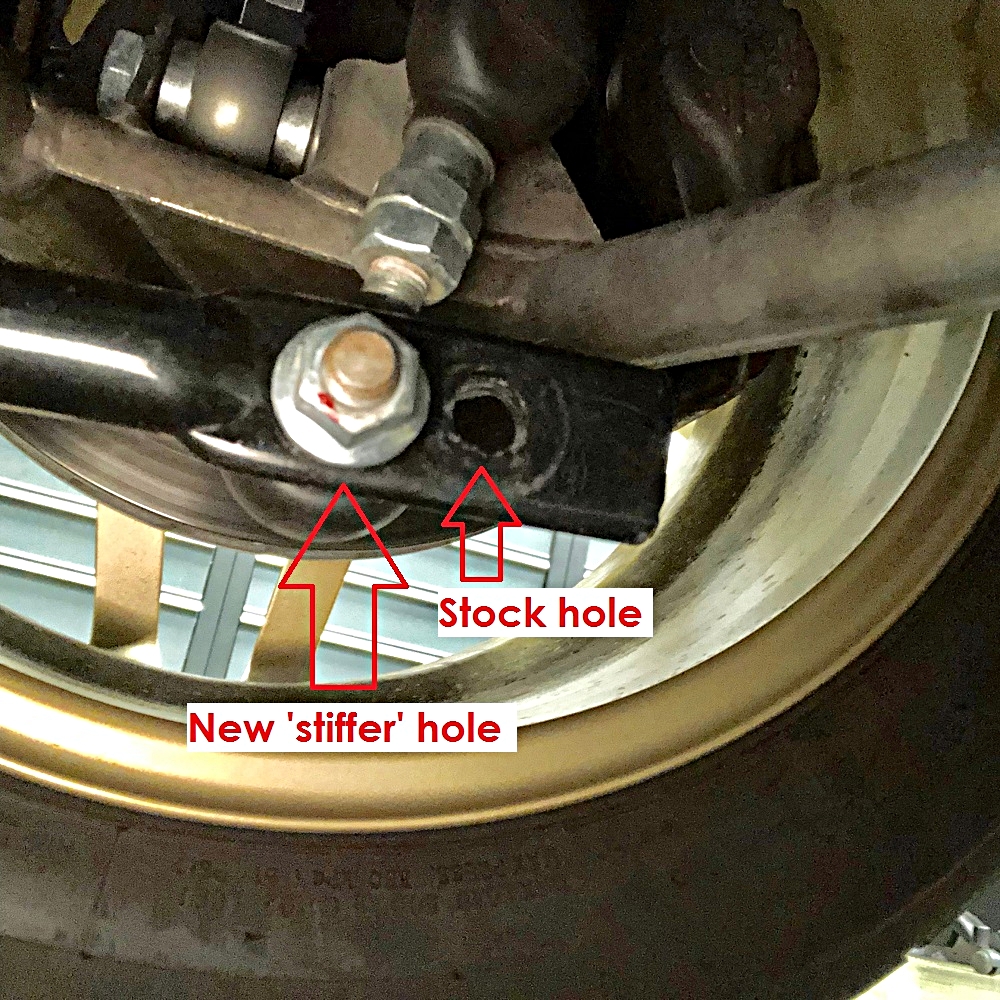
Not familiar with this 70s B-grade Horror flick? It's bad.
The Elise & Exige can be a very fun track day car. We believe that prepping the car does not require much investment but it is something that is required. There are three areas that need to be addressed if you plan to track your Lotus Elise/Exige. These three areas will keep your car running safely and reliably. They are:
- Rear Toe Link
- Oil Starvation
- Fuel Starvation
Each of these can be addressed with parts, or in some cases with additional maintenance scrutiny. Let's discuss each in more detail.
FUEL STARVATION
One fast long sweeper that Lotus car fuel starve. The factory fuel tanks are not baffled which results in fuel sloshing away from the fuel pick up. There are two fixes that we like:
- Keep your fuel tank full
- Baffled Fuel Tank
The cheapest solution is to simply top off your fuel tank BEFORE every track session. Some cars with even 1/2 tank of fuel have starved. If you prefer to run a light fuel load (AutoX or Time Trials) then our V2 Fuel Tank is a great solution. See the picture below:

We know that there are other solutions on offer like fuel surge tanks. We are not big fans of these as they do not fix the problem at the source. They also cut into fuel lines and create another area for failure. We know of at least 2 cars that have burned to the ground from surge tank-related failures. Why take the chance when you can fix the issue safely?
REAR TOE LINKS
We know the rear toe link joint is a weak point in the Elise/Exige - mostly with track-driven cars. There is a misconception that the toe link is weak - it is actually the joint where the stock balljoint meets the subframe. This joint can get loose and then the balljoint stud will start to neck and shear off. When this happens, you will lose control of your car as the rear toe will move wildly. This joint is in Single Shear which is not ideal.
The low-cost solution is to check the torque on the nut that holds this balljoint to the subframe. We like to torque it to spec and then paint market it. This was you can visually inspect this before and during each event. The safest solution is to upgrade into a rear toe link brace.
Over the years, we have developed several of these braces, including the DSbrace, TLUkit, RTDbrace, and RTD2brace. These bolt-in solutions require no modifications and place the joint into Double Shear. As a result, we have created a significantly stronger joint.

The easiest way to explain the differences between Double & Single Shear is to think of when you were a child and fighting over a stick or piece of wood with a friend. He grabs one end, trying to pull it out of your hands, the stick starts to go back and forth, you can hear it starting to crack and then you grab the other side of the stick putting his hand in the middle of your hands. He keeps pulling as hard as he can, but you have full control and there is no more tension on the stick. His force with one arm is now dominated by the strength of your two arms. Now, replace the stick with a bolt, and you and your friend's arms are metal rods. The same applies to the bolt as it would the stick.
The strength of a Double Shear joint is effectively double that of a Single Shear joint. Here is a picture that helps illustrate the shearing actions:

OIL STARVATION
Much like fuel starvation, engine oil is another area of concern on a Lotus. These cars can easily pull 1g in a corner with stock tires. Couple that with a long fast sweeper with an unbaffled oil pan and you will run the risk of damaging your engine.
A simple low-cost solution that can work for casual track day drivers is to overfill the oil pan with a bit more oil. Though this can work for someone running for the first time, some starvation can still occur if you are capable of maintaining sustained g loading. Even short periods of starvation will slowly chip away at your engine resulting in eventual failure. For a more permanent fix, we suggest a baffled oil pan.
A baffled oil pan like our gPAN3 has proven to be the solution to this problem. Especially if you are running in an Intermediate group or slicks or heavy downforce. There are hundreds of owners running these baffled pans with great results. Dry sump solutions are the most awesome solution but are far more complex and not a street-friendly solution.


